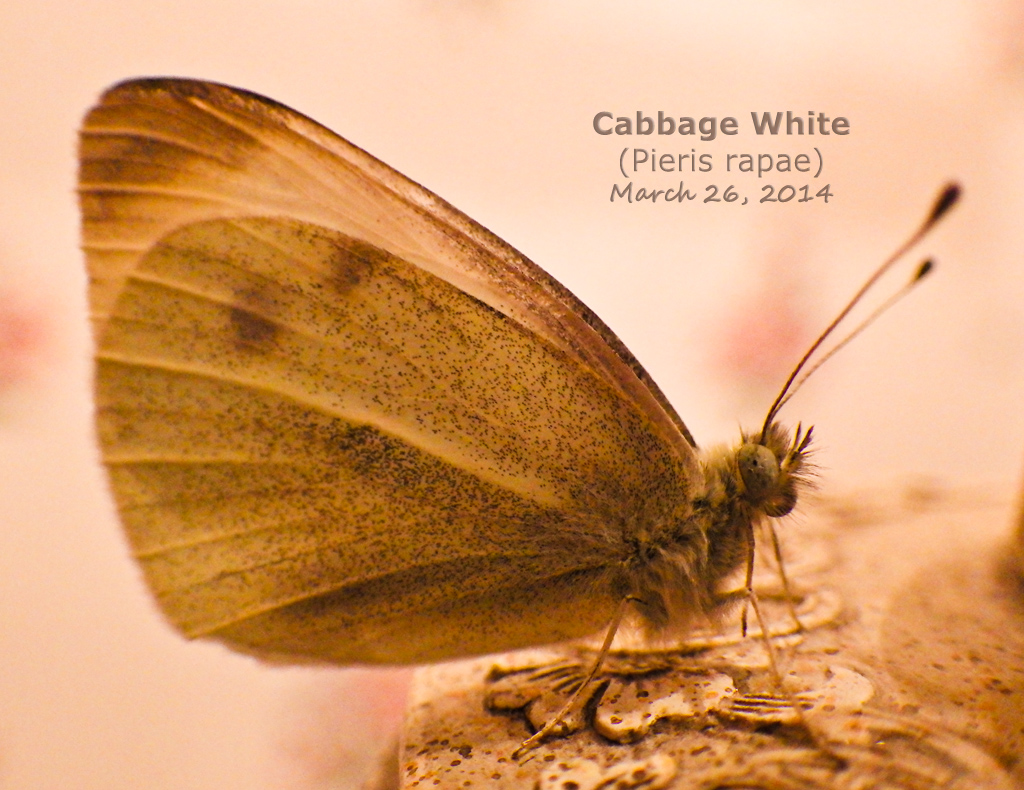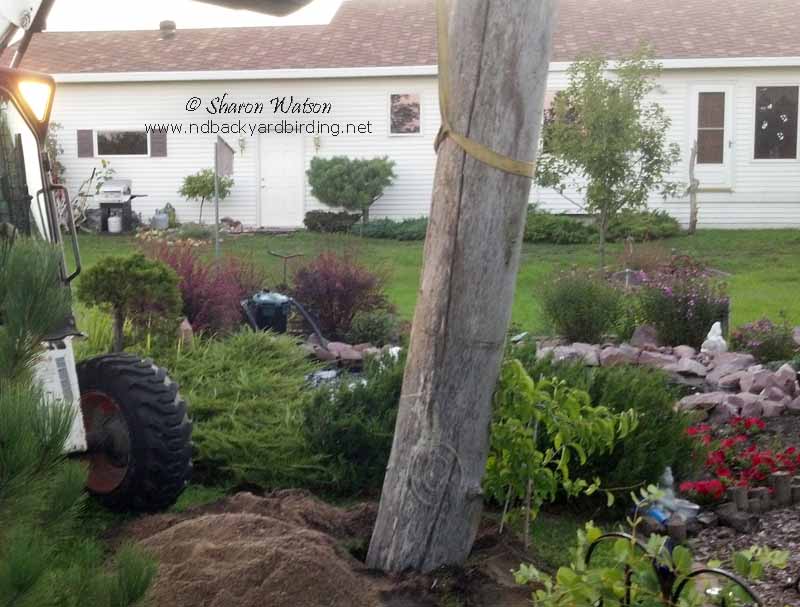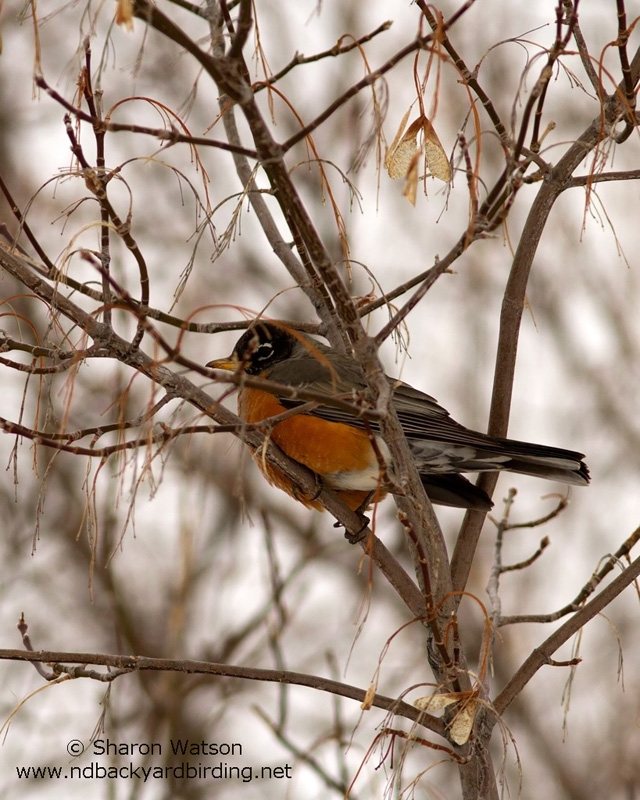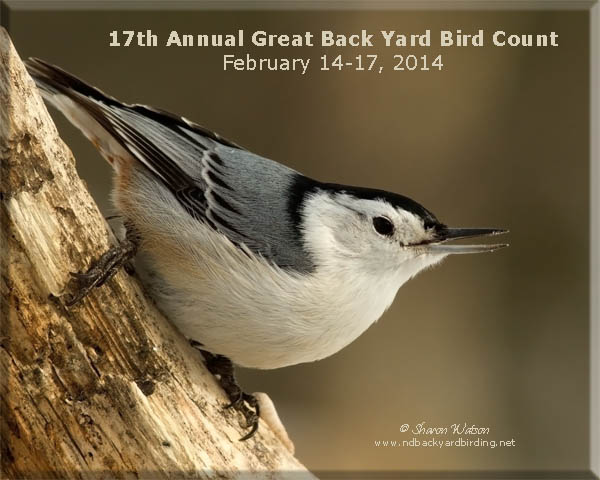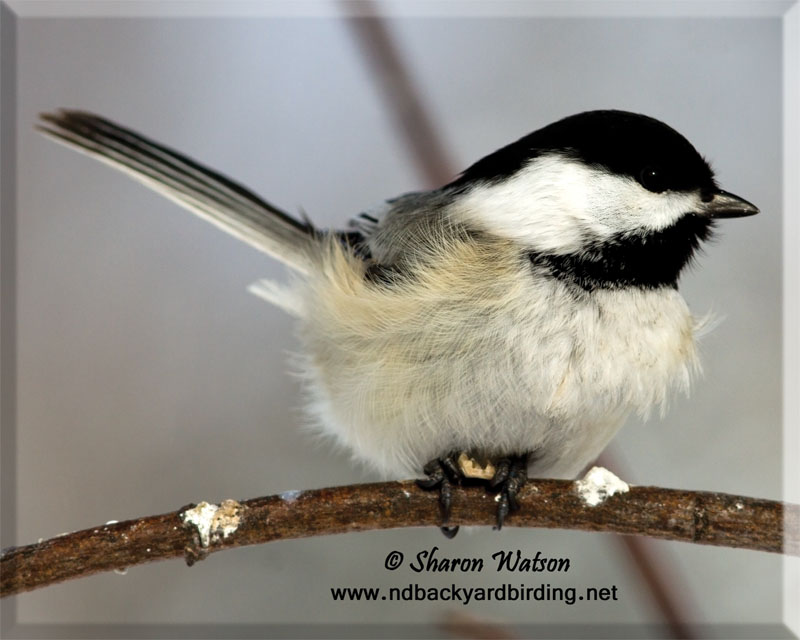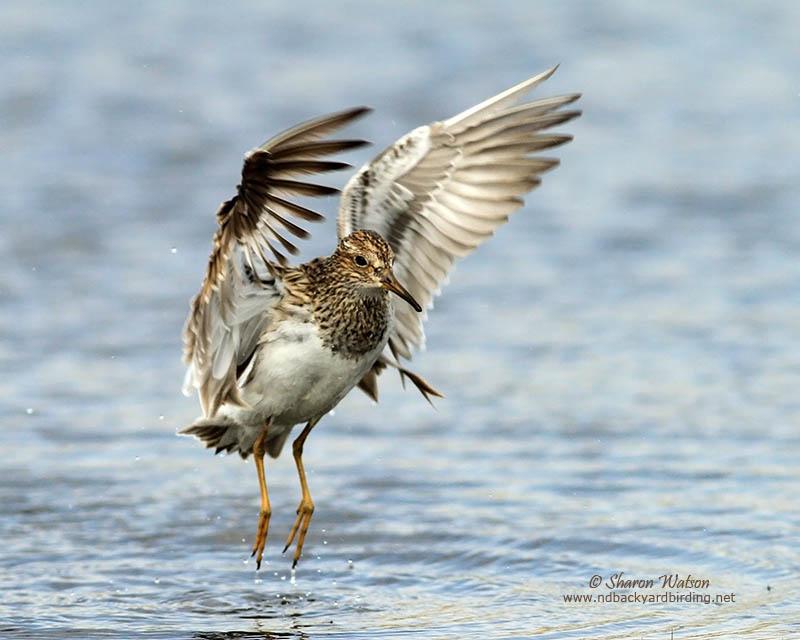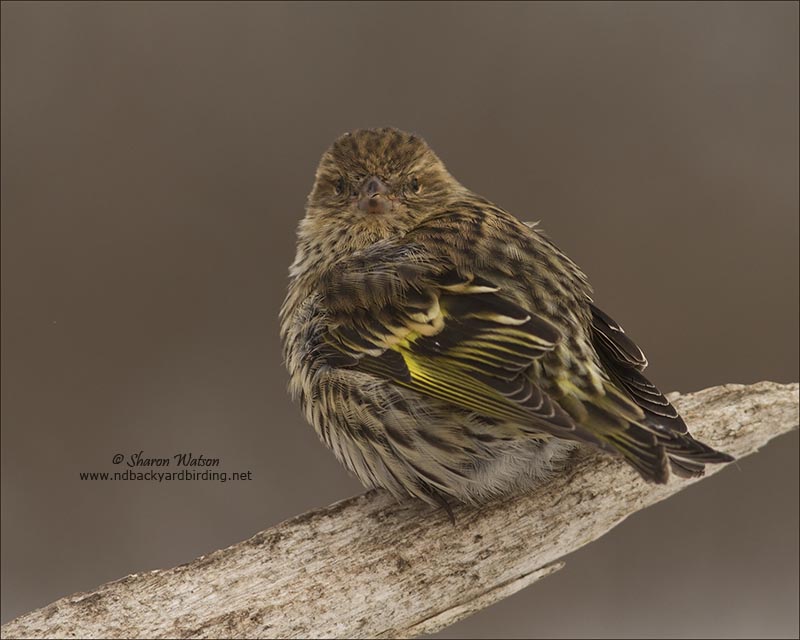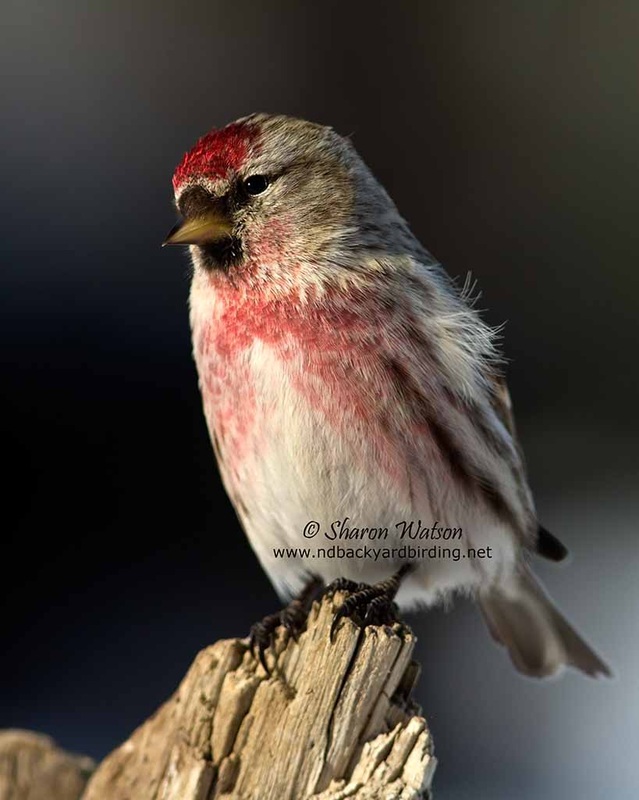I found this Cabbage White at local business clinging to an inside window. There is still snow on the ground so I decided to take it home and feed it. Hopefully it will survive long enough so it can be released outdoors if it ever warms up.
Identification: Upperside of wings white; forewing with black tip. Two submarginal black spots in female, one in male. Underside of hindwing and forewing apex evenly yellow-green or gray-green. Spring and fall short-day form is smaller, less yellow, with reduced black areas.
Wing Span: 1 3/4 - 2 1/4 inches (4.5 - 5.8 cm).
Life History: Males patrol for females. Females lay single eggs on undersides of host leaves. Chrysalids hibernate.
Flight: Two to three in northern part of range; 7-8 in the south. It is usually the first butterfly to emerge in spring.
Adult Food: Flower nectar from a very wide array of plants including mustards, dandelion, red clover, asters, and mints.
Wing Span: 1 3/4 - 2 1/4 inches (4.5 - 5.8 cm).
Life History: Males patrol for females. Females lay single eggs on undersides of host leaves. Chrysalids hibernate.
Flight: Two to three in northern part of range; 7-8 in the south. It is usually the first butterfly to emerge in spring.
Adult Food: Flower nectar from a very wide array of plants including mustards, dandelion, red clover, asters, and mints.
